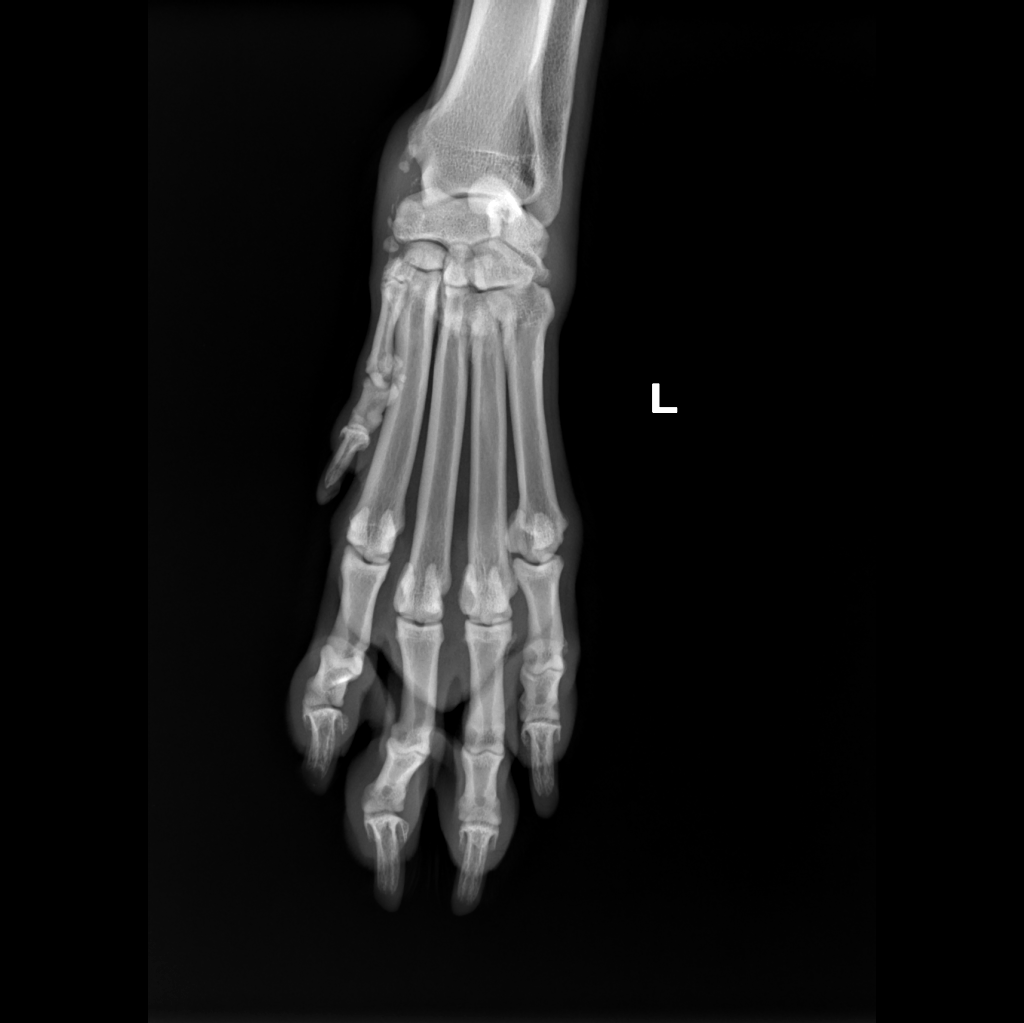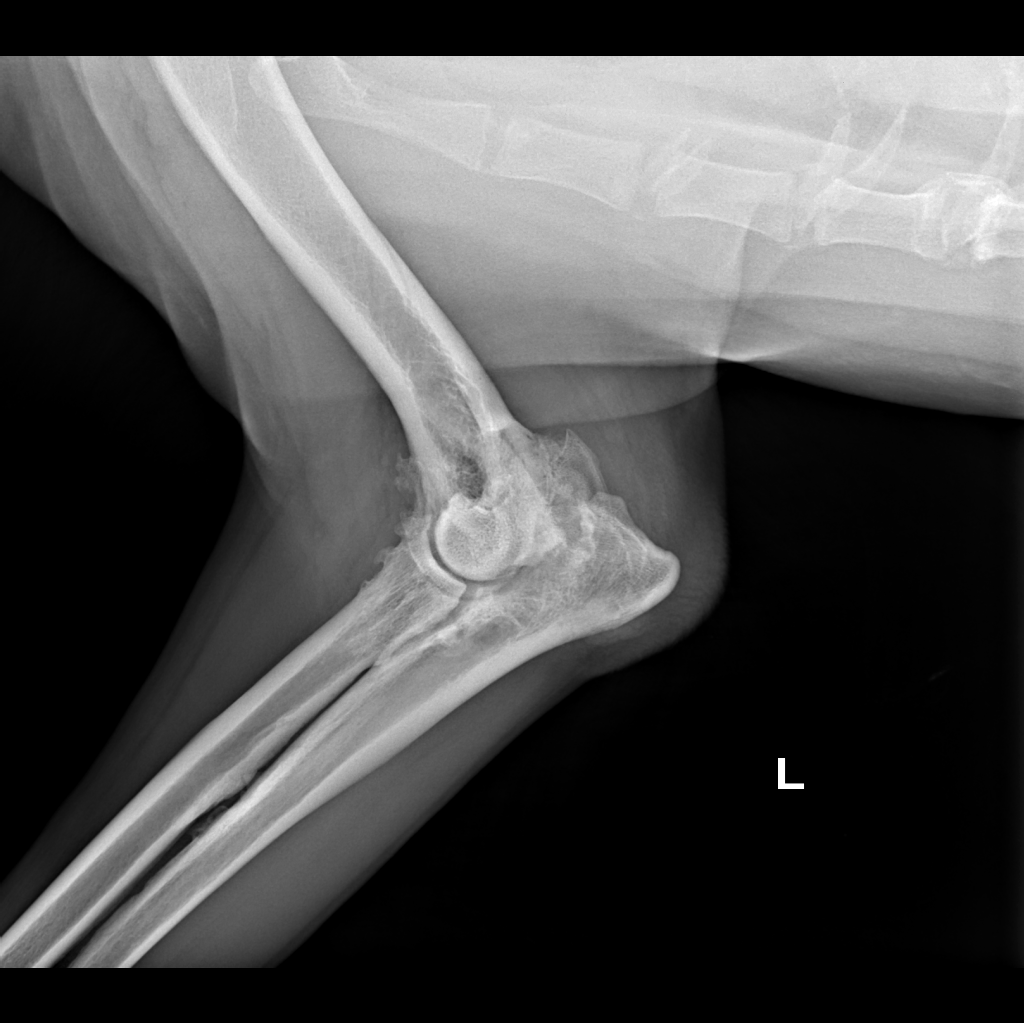Elbow Dysplasia in a Golden Retriever
Male, 12 yo, 32 kg, golden retriever
presented with chronic 3 grade left forelimb lameness
regularly active without recent trauma reported.
On history collection owner reported trauma 3 years ago with suspected involvement of left forelimb, no radiographs or medical report available from previous veterinarian.
Orthopedic examination reveals pain response during spine palpation and reduced ROM in flexion and extension of left elbow.
x-ray with awake patient was performed on forelimb (medio-lateral view of elbows and dorso-palmar view of carpus) and latero-lateral view of thoracic and lumbar vertebrae.
Radiographic findings consisted of severe left elbow dysplasia, in addition to spondylarthrosis (thoracic vertebrae and thoraco-lumbar region)
and degenerative changed on medial aspect of left carpus (in differential diagnosis: Abductor Pollicis Tenosynovitis vs peri-articular mineralization of unknown etiology)
Treatment of degenerative joint disease in a senior patients depends on several factors and can be complex.
Prognosis is determined by diagnostic imaging and patient’s response to treatment.
The treatment plan for this patient consists of a multimodal approach:
Weight management
Joint supplements (omega 3 & 6 / PEA )
Pregabalin
Activity: regular leash walks, controlled exercise, avoid stairs and slippery floor.
In acute phase use of NSAID’s (Meloxicam vs Firocoxib)
On follow up at 60 days, the owner reported very good response to the proposed protocol,
that was evaluated through amelioration of gait and increased activity during regular walks.
No acute pain was reported therefore additional NSAID’s administration was not necessary.




